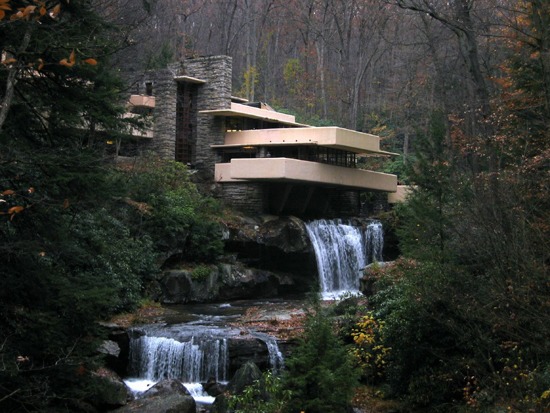What is Natural architecture
Natural architecture, also known as organic architecture or biomimetic architecture, is an architectural approach that draws inspiration from the principles and forms found in nature. It seeks to create buildings and structures that harmonize with their natural surroundings, while also considering sustainability, functionality, and human well-being.
Here are some key characteristics and principles of natural architecture:
- Biomimicry: Natural architecture takes cues from nature’s patterns, forms, and processes to inform the design of buildings. It looks at how nature solves problems and applies those solutions to architectural design. For example, a building might mimic the shape of a leaf to optimize natural ventilation or use a structural system inspired by the branching patterns of trees.
- Integration with the Environment: Natural architecture emphasizes the integration of buildings with the surrounding landscape. It aims to minimize the impact on ecosystems, preserve natural features, and create a sense of harmony between the built environment and nature. Buildings may be designed to blend with the topography, use local materials, or incorporate green spaces and landscaping.
- Sustainable Design: Natural architecture promotes sustainable practices throughout the design and construction process. This includes using environmentally friendly materials, implementing energy-efficient systems, maximizing natural lighting and ventilation, and incorporating renewable energy sources. The goal is to reduce resource consumption, minimize waste, and create energy-efficient buildings that have a minimal environmental footprint.
- Holistic Approach: Natural architecture considers the overall well-being of occupants and their connection to the natural environment. It prioritizes creating spaces that enhance human health, comfort, and productivity. Biophilic design principles, such as incorporating natural light, views of nature, and indoor plants, are often incorporated to promote well-being and reduce stress.
- Use of Natural Materials: Natural architecture utilizes materials that are sourced sustainably, biodegradable, or have a low environmental impact. This can include materials like wood, stone, bamboo, or rammed earth. These materials not only provide a natural aesthetic but also possess inherent qualities such as thermal insulation and durability.
- Energy Efficiency and Passive Design: Natural architecture takes advantage of passive design strategies to minimize energy consumption. By optimizing building orientation, using proper insulation, and incorporating shading devices, buildings can harness natural energy flows for heating, cooling, and lighting. This reduces the reliance on mechanical systems and enhances energy efficiency.
- Regenerative Design: Natural architecture aims to go beyond sustainability and actively contribute to the regeneration of ecosystems and communities. This involves designing buildings that generate energy, capture and treat water, promote biodiversity, and contribute positively to the local environment. It seeks to create regenerative systems that give back more than they take.
Overall, natural architecture embraces the principles of sustainability, biomimicry, and integration with nature to create buildings that not only function well but also resonate with the innate connection between humans and the natural world.
Natural architecture design and development
Natural architecture design and development refers to the process of creating built environments that are inspired by and harmonious with the natural world. It involves incorporating principles and elements found in nature into the design and construction of buildings and landscapes, resulting in structures that are sustainable, energy-efficient, and aesthetically pleasing.
Here are some key aspects of natural architecture design and development:
- Biophilic Design: Biophilic design aims to reconnect people with nature by incorporating natural elements into the built environment. It emphasizes the use of natural light, vegetation, and materials such as wood, stone, and water features. Biophilic design can improve well-being, productivity, and overall satisfaction with the built environment.
- Sustainable Materials: Natural architecture promotes the use of sustainable materials that have a minimal environmental impact. This includes materials like bamboo, cork, reclaimed wood, and recycled materials. Additionally, energy-efficient materials and technologies such as solar panels, rainwater harvesting systems, and green roofs are often integrated into natural architecture designs.
- Passive Design Strategies: Natural architecture takes advantage of passive design strategies to reduce energy consumption and maximize comfort. These strategies include optimizing building orientation for solar gain and natural ventilation, using shading devices to control heat gain, and employing thermal mass to regulate indoor temperatures.
- Integration with Surrounding Landscape: Natural architecture aims to create a seamless transition between the built environment and the natural surroundings. This can involve designing buildings to blend with the landscape, preserving existing vegetation, and creating outdoor spaces that encourage interaction with nature.
- Regenerative Design: Natural architecture goes beyond sustainability by embracing regenerative design principles. It seeks to have a positive impact on the environment by restoring ecosystems, promoting biodiversity, and using resources in a circular and regenerative manner.
- Cultural Context: Natural architecture design takes into account the cultural context and local traditions of a place. It respects and reflects the cultural heritage, local materials, and building techniques, creating a sense of belonging and identity.
- Holistic Approach: Natural architecture design and development consider the holistic relationship between the built environment, people, and the natural world. It takes into account factors such as human well-being, ecosystem health, and the long-term resilience of the design.



